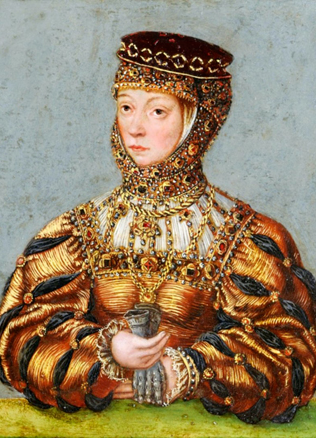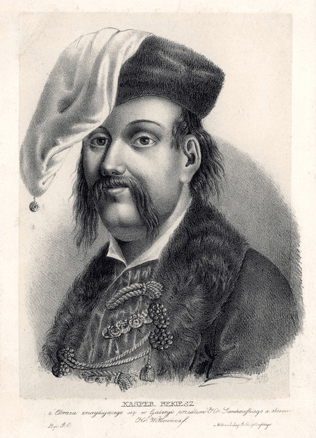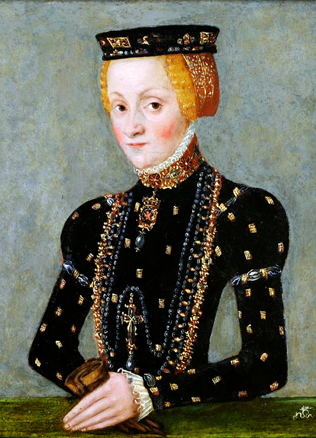Diplomatic ceremonial of the Grand Duchy of Lithuania and the State of Moscow at the end of the 15th – the first half of the 16th century
Diplomatic communication between the Grand Duchy of Lithuania and the State of Moscow was based on the exchange of embassies – the system of one-off diplomatic missions. Authorised diplomatic agents of a lower rank constantly plying between Vilnius and Moscow (or other residences of the monarchs of these states) carried different diplomatic documents, and the high-ranking agents went to conduct negotiations over the border conflicts, agreements on peace or armistice, and other affairs of the foreign policy.
“
Each violation of the procedure was treated as an insult of the monarch’s honour.
Authorised diplomatic agents, when abroad, could not retreat a step from a proper representation of the status of the monarch, and had to follow the etiquette, which was obligatory for the persons representing him strictly. Each violation of the procedure was treated as an insult of the monarch’s honour. Hence, the forms on the basis of which diplomatic commissions were carried out, or the ways thereby an agreement was reached during the negotiations, were no less important than the contents of the agreement. Therefore, every action was planned in advance, and the course of the diplomatic mission was designed from the beginning by means of strict instructions. In interstate relations the system of certain conduct based on mutually recognised norms of activity and the diplomatic ceremonial – solemn rites was followed; during them rituals performed marked separate stages of the diplomatic mission.
Oriental pomp
Like in many other countries, an old custom to welcome the envoys at the state border was alive in diplomatic practice of Lithuania and Moscow. Local officials with an escort of the other country met the authorised diplomatic agents on the border and showed the way. During the first official meeting they introduced themselves and handed in the ceremonial greetings on behalf of the Ruler to the members of the mission. Then, accompanied by the local officials the missions followed the route planned in advance across the territory of both states. On their way, depending on the circumstances, they stopped several times. The last stop of the mission was in the environs of the capital of the country. The courtiers with an escort arrived from the city to meet them there. In Moscow, the members of the diplomatic mission and the welcoming procession lined up in two rows in the middle of which there were envoys and the most important participants in the ceremonial of the welcoming party. Caps were taken off and horses were dismounted, the guests listened to the welcoming speech made by the receiving Ruler, (or made on his behalf). After the receiving ceremony was over, all the people mounted the horses and continued their journey along the streets of Moscow as far as the place of accommodation. The welcoming ceremonies in Lithuania were simpler: only the caps were taken off, and the horses were not dismounted. On behalf of the Grand Duke the receiving persons enquired the envoys about their health and about the journey. This procedure was followed in the environs of the capital of the country only when the high-ranking envoys arrived; it was not followed when the authorised diplomatic agents arrived: a small number of foot-messengers only announced about the patronage delegated to them and accompanied them to the city.
The spectacle of the Ruler’s power
The activity of the mission in the capital of the country started with a solemn reception given by the Ruler. This visit honoured the envoys and related to paying homage to the sovereign who had sent the mission. The members of the mission were accompanied by a court official of the rank equal to the status of diplomats. In Moscow, this trip was more solemn because at the instruction of the Ruler crowds of people gathered to watch the ceremony. It was sought to make the impression on the foreigners about the monarch’s power, and giving a meaning to the mission had to extol the Ruler among his own subordinates. Upon entering the court, the diplomats were met by the courtiers of the Ruler and other state officials. Several meetings were organised for the envoys before they reached the place of the audience: after they dismounted the horses, after they had climbed the stairs and in the halls. The duration of each meetings was determined by its importance – the first meeting was shortest, the envoys stayed longer at the top of the stairs, and the longest meeting was held in the halls, where the envoys who had arrived were met by the Ruler’s high-ranking officials.
“
It was sought to make the impression on the foreigners about the monarch’s power, and giving a meaning to the mission had to extol the Ruler among his own subordinates.
Of all the audiences, which the receiving party gave to the diplomats, the first one was held most solemnly. During it the envoys introduced themselves to the Ruler, presented the official diplomatic documents and gifts. The introduction started with expressing respect – bowing to the receiving monarch and his closest relatives. Other elements of the audience ceremonial were a question about the health of the monarch who had sent the diplomats and the procedure of inviting the members of the mission to the “hand of the Ruler”. The question about the health of the monarch was honouring of the latter, and giving the hand to be kissed was devoted personally to the participants in the diplomatic mission rather than to the sovereign who had sent the mission. These were the most important formal elements of the audience therefore the absence of one of these elements meant a conflicting situation between the states, showed discontent about the low rank of the members of the mission or their activity.
The historical sources mention the procedure directly devoted to the envoys – the question about the journey of the diplomatic mission. It often happened that during a trip to the Ruler’s residence various incidents related to the provision matters of the mission or the violation of the principle of inviolability could not be avoided due to the fault of both parties. Despite the real circumstances, the diplomats always gave a favourable answer to the question about the journey.
Dinner at the negotiation table
When the audience was over, members of the diplomatic mission were invited to a solemn dinner. The monarch’s ritual of sharing food and drinks was important there: after the Ruler tasted the food, pieces of the dish were sent to the Ruler’s family members and the high-ranking state officials, and then to the envoys.
“
During the party the envoys were honoured by the invitation “to the Ruler’s cup”: this procedure underlined patronage given to the representatives of the other monarch.
During the party the envoys were honoured by the invitation “to the Ruler’s cup”: this procedure underlined patronage given to the representatives of the other monarch. The following tests were given in honour of the envoys: the invitation to the Ruler’s table was regarded as the glorification and grace, its absence was treated as dishonour. The purpose of the ceremonials was significant too: a common meal with the presence of the Ruler had to create indirect relations between the monarch and the participants in the mission, which was considered to be the necessary condition for the success of diplomatic contacts.
Other receptions at the Ruler’s residence were similar to the first one. Only the last farewell audience was different, which was referred to as seeing off the envoys in the diplomatic documents. In his solemn speech the Ruler alluded to the negotiations and their results, sometimes he thanked the envoys for the gifts or announced about the preparation of the reciprocal mission. The ceremony of expressing the reciprocal honour – the ceremony of indirect bowing to the monarch of the other country was a significant part of this reception. During this visit the envoys could be invited “to the Ruler’s hand” and receive a glass of mead or wine on his behalf. The ceremonial procedures performed at the end of the mission within a general structure of representation performed not only the function of reciprocal honour but also that of gratitude for the graces provided.
Do You know?
The procedures of preparing and confirming (ratifying) the interstate agreements was noted for exclusive solemnity in the diplomatic relations between the Grand Duchy of Lithuania and Miscow. At the beginning of the ceremony of confirming an agreement, a representative of each party read his own copy of the agreement outloud, which he put on a bowl and then he put a cross over them. At that time the Ruler made the ceremonial speech – an oath upon completion of which he kissed the cross placed on the agreement. Later the envoys, on behalf of their monarch, swore and kissed the cross.
A diplomatic “bypass”
A similar system of representation, as during the time of contacts of the highest level, was followed in the practice of diplomatic contacts of the Council of Lords of the Grand Duchy of Lithuania and the boyars of Moscow. Though the majority of the rites common to high-level contacts were applied to the diplomatic relations of the Council of Lords and the nobility of Moscow, their nature differed. Despite the strained interstate relations attempts were made to preserve excessive politeness, rationality or flexibility that was not typical of the contacts between the rulers. No deliberate cases of violating the ceremonial have been recorded in the sources. These changes can be related to the main function of the then parallel diplomacy – the renewal of the diplomatic relations when due to different circumstances official relations between the Rulers broke off. Both the diplomatic activity carried out on behalf of the Rulers and parallel contacts were organised following one and the same model, its general structure coincided with the system of the diplomatic representation formed in the European countries in the Middle Ages. Different modifications of the universal forms of the diplomatic activity and differences in them that appeared in the practice of diplomatic relations of the Grand Duchy of Lithuania in the State of Moscow were determined by the peculiarities of the political, social and cultural development.
Marius Sirutavičius



